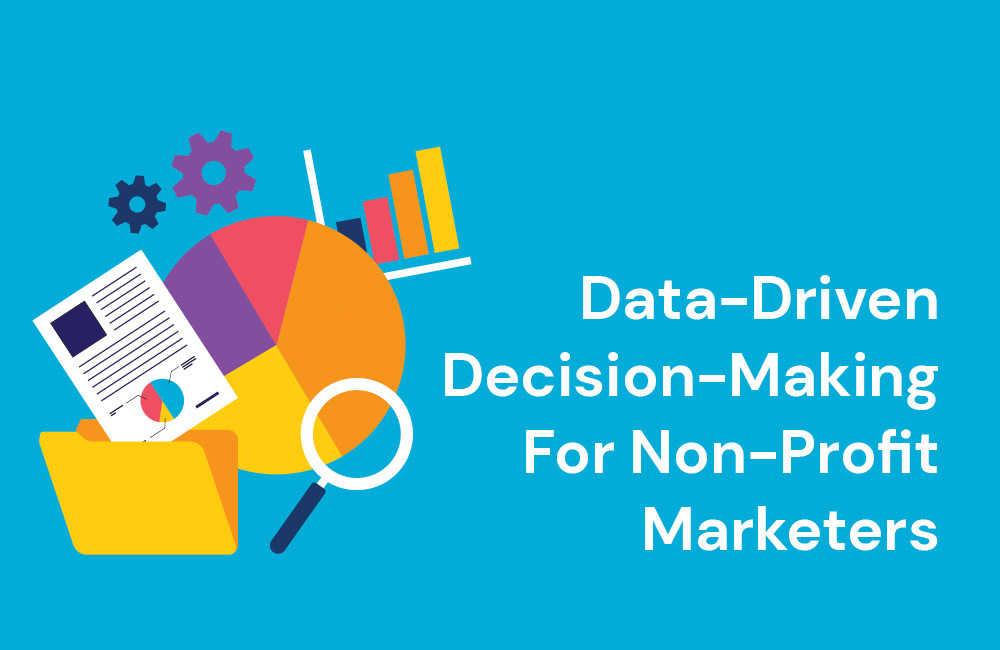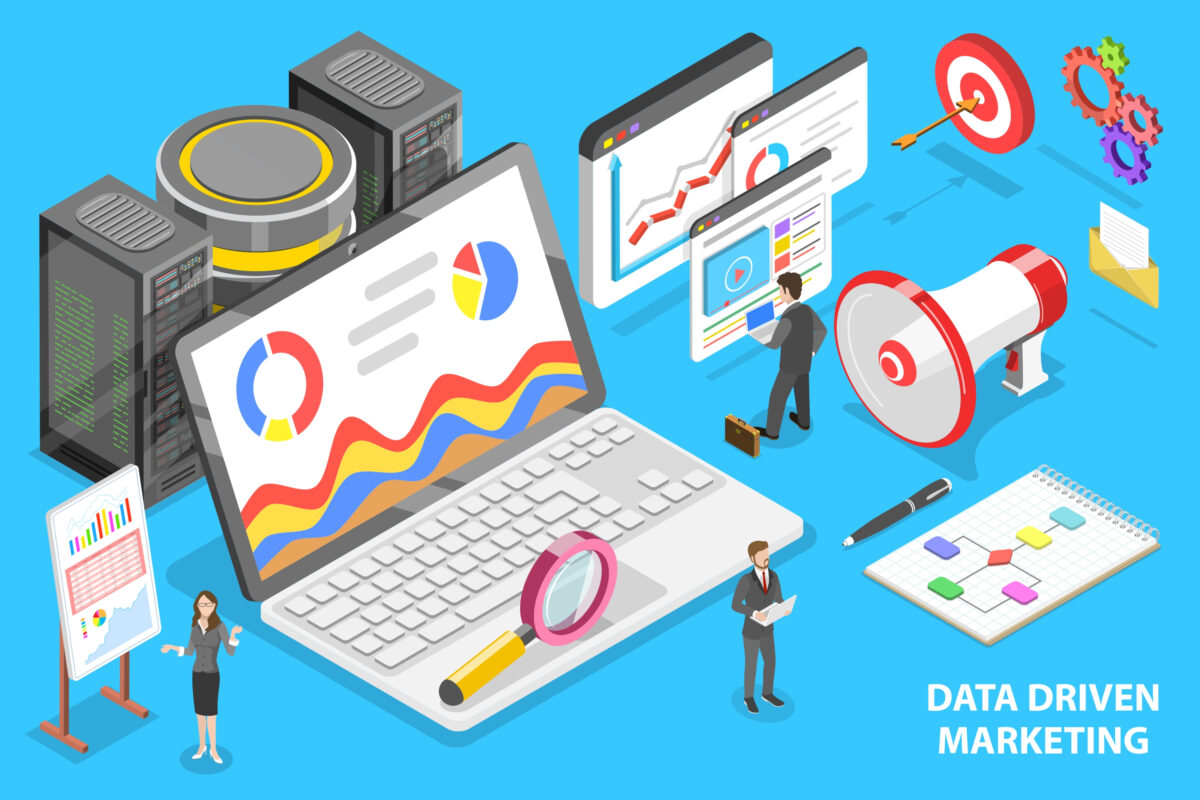
Data-driven Decision-making for Non-profit Marketers
It’s time to dispel the myth that data analytics and data-driven decision-making is reserved for corporate entities. In the non-profit sector, harnessing the potency of data can lead to deeper engagements, more effective campaigns, and ultimately, a greater impact on the causes we serve. Let’s journey through the data forest, exploring the tools, metrics, and strategies that every non-profit marketing leader should wield to navigate this digital age with precision.
Understanding Data Collection and Analysis
In a world where people are inundated with marketing messages, the ability for non-profits to adapt their marketing strategies on the fly is invaluable. Beyond just good intuition, the power to shift course effectively lies within data – the silent yet crucial force behind smart marketing decisions.
Diverse Data Sources
Non-profits hold a treasure trove of diverse data. From fundraising statistics to volunteer demographics, every piece of information is a potential nugget of gold. Understanding the various types of data and how they interconnect is the first step to harnessing its potential.
- Donations and Fundraising Data: Track the donation patterns and behaviors of your supporters. Is there a specific time of year when donations spike or drop? What type of campaign resonates most with your audience?
- Volunteer Information: Leverage volunteer management systems to understand not just who is participating, but their motivations and engagement levels. High volunteer retention is a key metric of a strong supporter community.
- Social Media Engagement: Tools like Hootsuite and Sprout Social can aggregate likes, shares, and comments, giving insight into the public’s reactions to your content and campaigns.
- Surveys and Feedback: Utilize feedback forms and direct surveys for a qualitative understanding of what your audience thinks and feels about your initiatives.
Did you know that non-profits can get upto $120,000 per year in Google Search Advertising Spend for free? To know more, check out this article.
Tools and Techniques for Data Analysis
Data analysis is an art form, one that is supported by an array of tools. For non-profits with limited resources, open-source software like R and Python can provide robust analysis capabilities at low or no cost. Moreover, visualization tools such as Tableau and Google Data Studio can turn complex spreadsheets into easy-to-understand charts and graphs.
- Exploratory Data Analysis (EDA): Begin by exploring your raw data. EDA can uncover patterns and relationships that you may not have anticipated, acting as a compass for further inquiry.
- Regression Analysis: For a more sophisticated look at causality, regression models can help predict donor behavior based on past trends and external influences.
- A/B Testing: This technique, often used in digital marketing, can provide quantitative insights into the effectiveness of different campaign elements, from email subject lines to website CTAs.
Identifying Key Performance Indicators (KPIs)
The North Stars of Data-driven Decision-Making for Non-profit Marketers
To measure success, we must first define what success looks like. In non-profits, KPIs can range from the number of beneficiaries served to the percentage of funds spent on programs versus administration.
Here are a few key metrics to consider:
- Donor Retention Rate: A staple metric in non-profit marketing, the donor retention rate shows the percentage of donors who continue to give year over year.
- Beneficiary Impact Metrics: From improved health outcomes to increased literacy rates, tracking the impact on the end beneficiary is a vital KPI for non-profits.
- Engagement on Social Media: As social media becomes more integral to our daily lives, the engagement rate – likes, shares, comments – can serve as a gauge for brand awareness and supporter loyalty.
Setting Measurable Goals
The SMART (Specific, Measurable, Achievable, Relevant, Time-bound) goal-setting framework is especially useful for defining KPIs that are clear and actionable.
- Specific: Articulate exactly what you want to achieve. For example, “Increase volunteer hours by 20% compared to last year.”
- Measurable: Quantify your KPI. For example, “Raise $200,000 in our annual fundraising campaign.”
- Achievable: Be ambitious but realistic. For example, “Onboard 100 new donors in the next quarter.”
- Relevant: Ensure the KPI aligns with the broader goals of your organization.
- Time-bound: Set a clear deadline for achieving the goal. For example, “Reach 10,000 social media engagements by the end of the fiscal year.”
Setting measurable goals ensures that you have a benchmark against which you’re collecting data. It also helps influence how and which data you collect. Collecting all forms of data possible will only lead to data overload. For data-driven decision-making, you need to ensure that the data you’re collecting is in line with your goals.
Using Data to Inform Marketing Strategies

Know Thy Audience
Segmenting your audience is a powerful way to tailor your message to different groups. Collect data on demographics, psychographics, and past interactions to create detailed personas.
Some of the data you can collect includes:
- Demographics: Age, gender, location – these are the basics that form the foundation of any marketing strategy.
- Psychographics: Values, opinions, interests – these are the inner motivations that can spark engagement and action.
- Past Interactions: Donor or volunteer history, event attendance – these provide a track record of engagement that can inform future outreach.
Messaging and Content Optimization
Data should drive every word and image you put in front of your audience. A/B testing headlines and email body content can provide clear winners that resonate best with your audience.
Use the below tips to optimize your content and outreach:
- Emotional Triggers: Use sentiment analysis to understand the emotional impact of different messages.
- Content Format: Videos, infographics, long-form articles – base your content creation on what has historically performed best.
- Call-to-Action (CTA) Effectiveness: Track the click-through rates (CTRs) of different CTAs to see which drives the most action.
Channel Selection and Optimization
Are you reaching your audience where they are most receptive? Data on channel performance can guide you towards the most effective platforms.
Think about the following factors:
- Website Analytics: Measure traffic and engagement to understand how your website contributes to your overall marketing strategy. To know more about how to boost your organic and paid website traffic, check out this article.
- Email Marketing: Open rates, CTRs, and conversions can tell a story about the effectiveness of your email campaigns.
- Social Media: Each platform offers a wealth of data points – followers, engagement rates, shares – that can refine your social media strategy.
Measuring and Evaluating Campaign Performance
The Ongoing Feedback Loop
A campaign is not a static entity; it lives and breathes with the feedback it receives. Monitor KPIs throughout the campaign’s life cycle to spot trends and make necessary adjustments.
Consider the below tips:
- Daily Monitoring: Keep a finger on the pulse of your campaigns with daily checks on key metrics.
- Mid-Campaign Analysis: Look for patterns and reassess KPIs or tactics if necessary.
- Post-Campaign Evaluation: Once the dust settles, conduct a comprehensive post-mortem to understand what worked, what didn’t, and what could be improved for next time.
Making Data-Driven Adjustments
The beauty of data analysis is its ability to guide real-time changes. Engagement is low? Consider altering your content strategy. If a channel is underperforming, pivot your resources to a more effective platform.
Here are some key changes you can make, without delay, when you’re data-driven:
- Reallocation of Resources: When one element of your campaign is outperforming others, consider increasing investment in that area.
- Content Iteration: Use A/B testing to refine campaign elements while the campaign is live.
- On-the-Fly Outreach: If donor response is not meeting expectations, consider additional outreach methods or channels.
In the symphony of non-profit marketing, data should take a leading role, shaping fine-tuned strategies that resonate with our audiences’ hearts and minds. As you look ahead to new horizons, embracing the insights data offers will not only optimize your marketing efforts but ensure that the causes you champion stand on the strongest possible foundation.
The path to becoming masters of data in non-profit marketing may be long, but the journey is a rewarding one. Embrace the tools, track the trends, and let the data speak because, when it does, the impact is bound to be transformative. Let your organization’s story be one where data wasn’t just a buzzword, but the very fabric that weaves together a narrative of change and growth.
To ease the path to becoming data-driven, consider working with an agency that specializes in developing and implementing marketing strategies and campaigns. Working with specialists can provide the insight and support you need as you begin to move toward a data-driven decision-making model.
Want to make your marketing decisions data-driven?
Talk to the marketing experts at Cyan today. Contact Us.

Discover what Cyan can do for you
We want to get to know you better so we can understand what services are going to help you meet your goals.